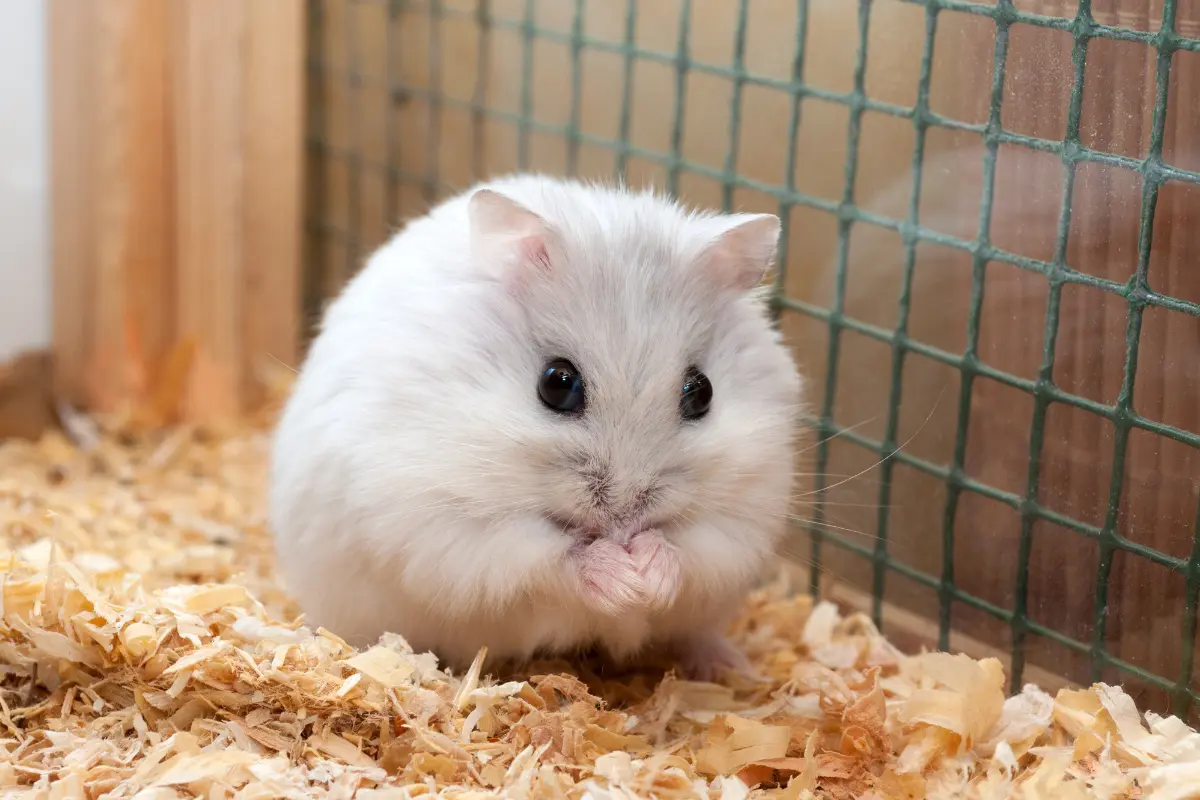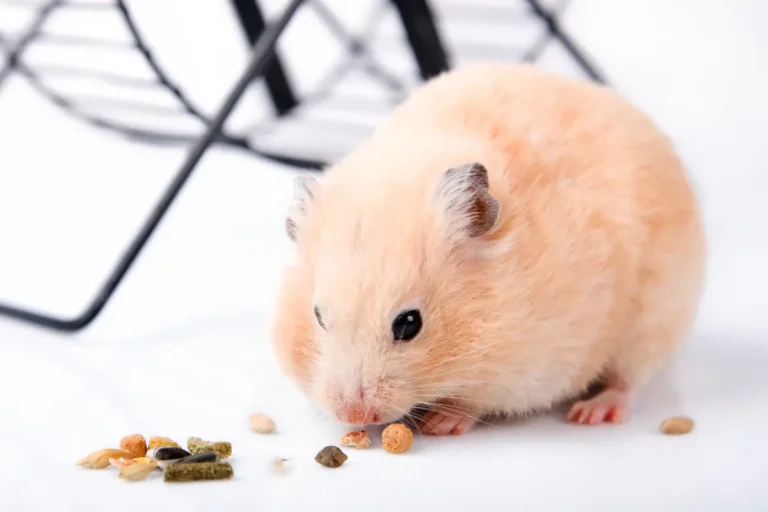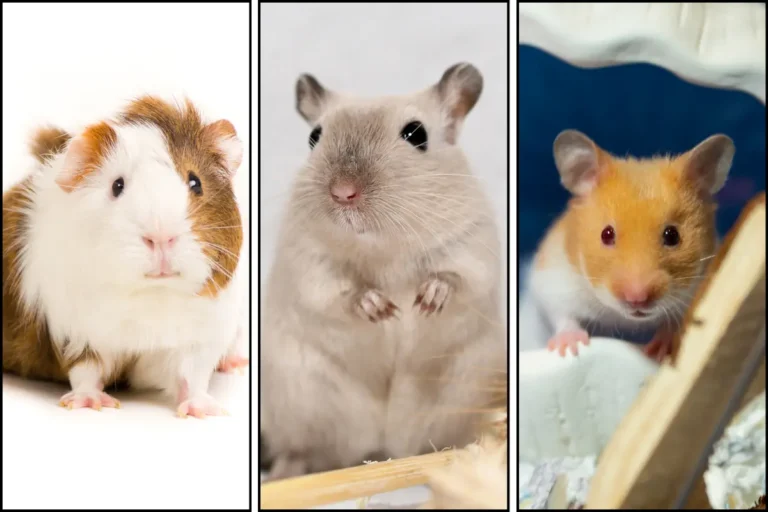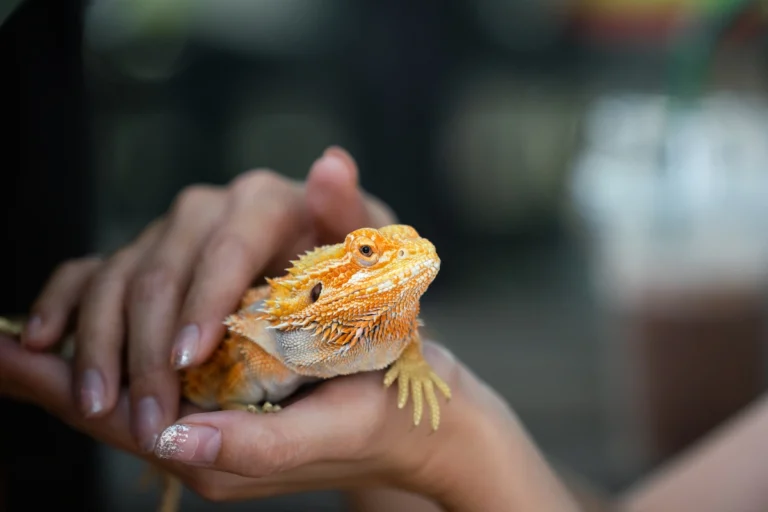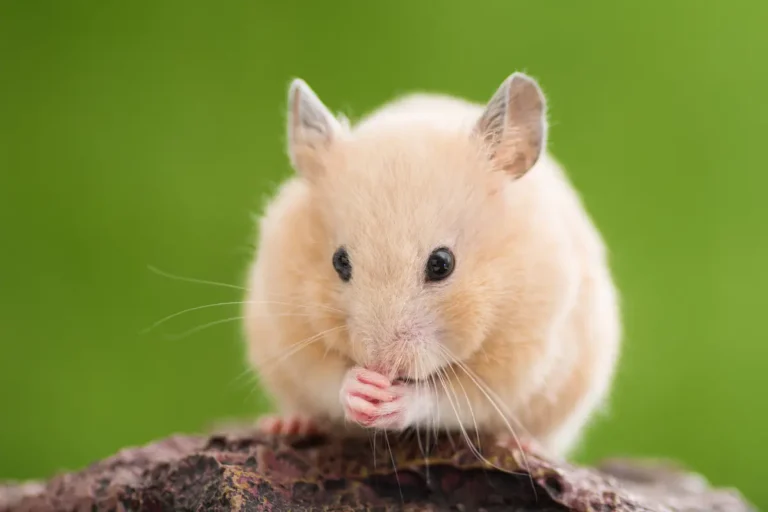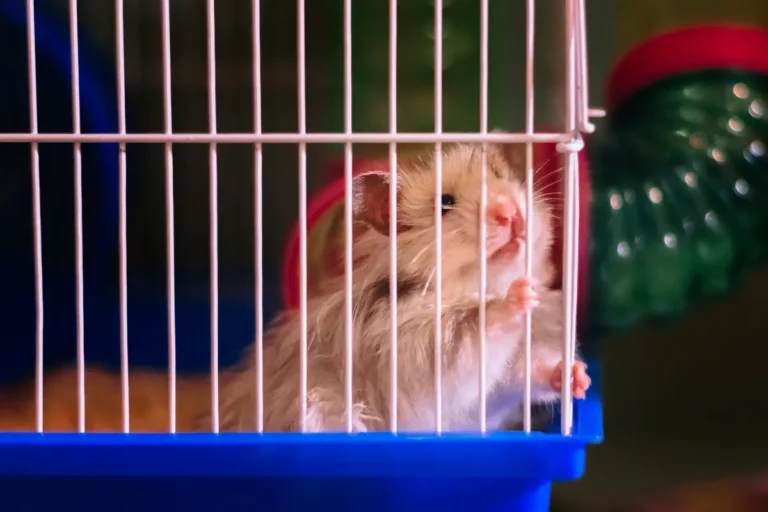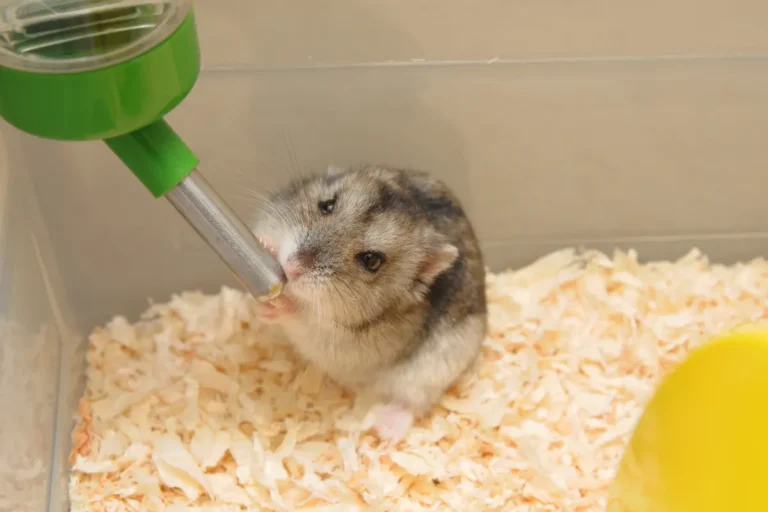How To Take Care Of A Dwarf Hamster (A Beginners Guide)
Dwarf hamsters are small, delightful creatures that make excellent pets for both children and adults. Their playful nature, manageable size, and relatively low maintenance requirements make them a popular choice. However, like all pets, they need proper care to thrive.
We will walk you through the essential aspects of dwarf hamster care, including their habitat, diet, handling and health.
1. Introduction to Dwarf Hamsters
Dwarf hamsters are small, lively rodents that make great pets for both beginners and experienced animal lovers alike. Their manageable size, playful nature, and relatively low-maintenance needs make them a popular choice for small pet owners. Unlike larger hamster species, such as the Syrian hamster, dwarf hamsters are more compact and agile, typically measuring between 2 to 4 inches in length, depending on the species.
There are several species of dwarf hamsters, with the most common being the Campbell’s Dwarf Hamster, Winter White Dwarf Hamster, and Roborovski Dwarf Hamster. While all dwarf hamsters share similar care requirements, each species has unique characteristics that may influence your decision.
| Species | Size | Temperament | Care Needs | Lifespan |
|---|---|---|---|---|
| Campbell’s Dwarf Hamster | 3 to 4 inches | Friendly, but can be territorial | Needs space, tunnels, and an exercise wheel | 2 to 3 years |
| Winter White Dwarf Hamster | 2 to 3 inches | Docile, enjoys human interaction | Needs a calm environment and climbing opportunities | 2 to 3 years |
| Roborovski Dwarf Hamster | 2 inches | Active, not fond of handling | Needs a large, secure cage with space to run | 3 to 4 years |
| Chinese Dwarf Hamster | 4 to 5 inches | Curious, gentle, sensitive to stress | Needs tunnels, climbing, and a calm environment | 2 to 3 years |
Setting Up the Habitat for Your Dwarf Hamster
Creating a comfortable, safe, and enriching habitat is essential for your dwarf hamster’s well-being. Since they are highly active and curious creatures, providing a habitat that mimics their natural environment as closely as possible will help them thrive. Here’s how to set up a perfect habitat for your dwarf hamster:
1. Choosing the Right Cage
The foundation of your hamster’s habitat is the cage. It needs to be large enough to accommodate their active nature, provide enrichment, and keep them safe.
- Cage Size:
The minimum recommended cage size for a dwarf hamster is 32 inches (81 cm) in length. Larger cages provide more room for exploration and are better for your hamster’s mental and physical health. The height of the cage isn’t as important as the floor space, but multi-level cages can give them more areas to explore vertically.
- Cage Type:
A glass tank or a plastic aquarium is ideal for dwarf hamsters. These are safe options as they prevent your hamster from squeezing through bars, which is a concern with wire cages. You should choose a tank with a ventilated mesh lid to provide airflow while keeping your hamster secure. Alternatively, you can opt for a plastic bin cage with a secure lid, which can also offer a good environment for a hamster.
- Avoid Barred Cages:
Dwarf hamsters are small enough to escape from the bars of a typical wire cage. Additionally, bars can cause stress if they are too small or too close together, and they may lead to injuries if your hamster tries to climb them.
2. Bedding
The bedding material should be soft, absorbent, and safe for your hamster to burrow in. Dwarf hamsters naturally enjoy digging, so providing the right bedding will allow them to express this behavior.
Recommended Bedding Materials:
- Shredded Paper Bedding: This is soft and absorbent, making it a great choice for hamsters with sensitive respiratory systems. Ensure the paper is unbleached and free of dyes to prevent skin irritation.
- Carefresh: Made from recycled paper, Carefresh is another excellent bedding option. It is safe, absorbent, and less dusty than some other bedding types.
- Aspen Shavings: If you prefer wood-based bedding, aspen is the safest option. Avoid pine and cedar shavings, as these can cause respiratory issues in hamsters due to their strong scent.
Avoid Cotton: Cotton bedding, such as cotton balls, should never be used. It can cause internal injuries if ingested or get wrapped around your hamster’s toes and limbs, causing painful constriction.
Bedding Depth: To encourage natural burrowing, use a deep layer of bedding—about 3 to 4 inches deep. This allows your hamster to dig and create their own burrows.
3. Enrichment and Accessories
Dwarf hamsters are highly intelligent and need mental stimulation to stay happy. Providing them with the right toys and accessories will help keep them engaged and healthy.
- Exercise Wheel:
A solid-surface wheel is a must-have in any hamster habitat. A wheel with a solid surface (not bars) ensures that their feet don’t get caught, which can lead to injury. The wheel should be large enough to allow your hamster to run comfortably, at least 6 inches in diameter.
- Tunnels and Tubes:
Dwarf hamsters love to hide, burrow, and tunnel, so include a few plastic tunnels, PVC pipes, or even cardboard tubes in their cage. You can also purchase pre-made tunnels or use items like old toilet paper rolls to add more exploration opportunities.
- Climbing Structures:
Hamsters are natural climbers, so providing ladders, platforms, and other climbing structures can help satisfy this instinct. You can buy wooden platforms or use safe household items like wooden shelves or ramp-style toys. Always ensure that climbing structures are secure and won’t topple over.
- Chew Toys:
Dwarf hamsters need to chew to keep their teeth trimmed, as their teeth grow continuously. Provide chew toys, such as wooden chews, twigs, or even chewable cardboard. Applewood sticks or willow branches are excellent options for safe chewing.
- Hiding Spots:
To make your hamster feel secure, include small, covered hiding spots where they can retreat to rest or sleep. You can use a small wooden house, ceramic hideaways, or even empty cardboard boxes.
4. Digging Area
Dwarf hamsters are instinctive diggers, so providing a designated digging area is vital to their physical and mental well-being.
Chinchilla Sand or Soil: A small section of the cage should be dedicated to digging. Fill it with chinchilla sand or organic soil (free of pesticides or chemicals) that they can dig in. Avoid using sand from the beach, as it can contain harmful bacteria and parasites.
Digging Tubes or Piles: Another option is to add cardboard boxes, piles of bedding, or digging tubes filled with bedding where your hamster can burrow. These give them a chance to simulate their natural digging behavior and create tunnels.
Feeding Your Dwarf Hamster
Feeding your dwarf hamster properly is essential to ensure their health, happiness, and longevity. Here’s how to feed your dwarf hamster the right way:
1. Commercial Hamster Food
The foundation of your dwarf hamster’s diet should be commercial hamster food, which comes in two main types: seed mixes and pellet-based food.
Pellet-Based Food:
Pellets are ideal because they contain all the nutrients your hamster needs in one easy-to-eat form. Look for high-quality dwarf hamster pellets that include essential vitamins, minerals, and fiber.
- Why Pellets are Best: Pellets prevent your hamster from picking and choosing only the foods they like, ensuring they get a balanced diet without overeating.
Seed Mixes: While seed mixes can be offered, they are less nutritionally complete compared to pellets. They may contain seeds your hamster may prefer (like sunflower seeds), but they tend to be higher in fat and sugar. If you choose a seed mix, select one designed for dwarf hamsters and limit the quantity to prevent obesity.
You can also feed your hamster small amounts of fresh food, such as apple slices, carrots, and dandelion leaves. Avoid overfeeding your hamster, as obesity is a common issue. Offer a small portion of fresh food daily, and allow your hamster to finish it before providing more.
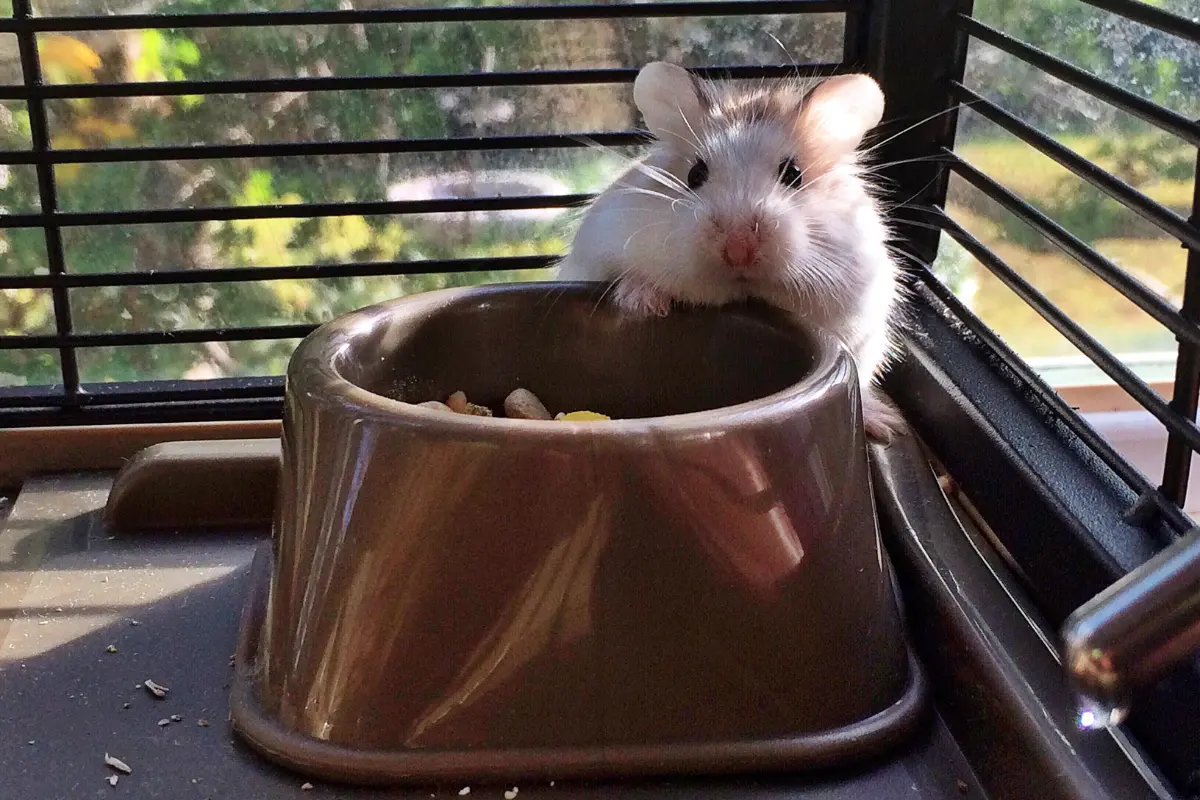
2. Treats
Occasional treats are a great way to bond with your hamster and offer a variety in their diet.
Hamsters love chewing, so providing chew sticks, twigs, and dried leaves is great for their dental health. Small amounts of unsweetened whole-grain cereals, oats, or dried mealworms can be offered as treats, giving your hamster extra protein and fiber.
Certain foods can be harmful to dwarf hamsters and should always be avoided:
- Sugary Snacks: Avoid giving your hamster sugary or processed foods like chocolate, candy, or sweetened cereals.
- Onions, Garlic, and Leeks: These can be toxic to hamsters and should never be fed.
- Citrus Fruits: As mentioned, citrus fruits like oranges and lemons should be avoided due to their high acidity.
- Salty or Fatty Foods: Any salty or high-fat foods, such as chips or salted nuts, can lead to health problems like obesity or kidney issues.
- Seeds with Shells: While seeds can be part of a hamster’s diet, sunflower seeds with shells can be hard for them to digest and can cause choking or digestive issues if consumed in large quantities.
3. Water
Always provide fresh water in a water bottle with a metal spout. This keeps the water clean and prevents spills. Change the water daily to keep it fresh. While some hamster owners use water bowls, water bottles are generally better as they help prevent spills and contamination.
Handling and Socialization of Dwarf Hamsters
Dwarf hamsters are small, quick, and sometimes a bit skittish, but with patience and gentle handling, they can become comfortable with human interaction.
1. Initial Handling: Getting Started
When you first bring your dwarf hamster home, give them time to adjust to their new environment. The first few days are crucial for helping them settle in without feeling stressed or overwhelmed. Allow your hamster to acclimate to their cage for a few days before attempting to handle them. This helps reduce stress and lets them feel safe in their new home.
When you’re ready to start handling, approach your hamster slowly and gently. Place your hand in the cage without trying to grab them immediately. Let them sniff your hand, and allow them to become familiar with your scent.
Begin with short handling sessions (1-2 minutes), gradually increasing the length as your hamster gets more comfortable. Always stay calm and avoid sudden movements that could startle them.
2. How to Pick Up Your Dwarf Hamster
Dwarf hamsters are small and delicate, so it’s important to handle them gently and with care.
- Use Both Hands: The best way to pick up a dwarf hamster is to gently scoop them up with both hands. One hand should go underneath their belly, and the other hand should support their back and hind legs. Be sure to support their body fully so they feel secure and don’t get injured.
- Never Grab by the Tail or Skin: Never grab a hamster by its tail, skin, or scruff. This can cause serious injury or stress. Always handle them gently by supporting their whole body.
- Hold Them Close to Your Body: Once picked up, hold your hamster close to your chest or stomach to make them feel more secure. Keep them at a safe height to avoid dropping them, which could cause injury.
- Let Them Explore Your Hands: Instead of holding them constantly, let your hamster explore your hands and arms on their own. This allows them to build confidence and reduces stress.
3. Building Trust Through Socialization
Hamsters are naturally solitary animals, but with regular, positive interactions, they can learn to trust their owners and enjoy spending time with them. Talking to them softly can help calm them, especially if they’re feeling nervous. Over time, they’ll become familiar with the sound of your voice.
Avoid making loud noises or sudden movements when interacting with your hamster, as this can frighten them and hinder the bonding process. Keep your home quiet and calm during handling times.
After building trust, your hamster may even sit calmly in your hand or on your lap, enjoying the time spent together.
Health Checks for Your Dwarf Hamster
Performing regular health checks will help catch potential issues early, preventing more serious health problems down the line.
1. General Health Observation
The first step in checking your hamster’s health is simply observing their overall behavior and physical condition.
- Activity Level: A healthy hamster will be alert, active, and curious, particularly during their active hours. Lethargy or an overly passive demeanor can be a sign of illness or stress.
- Appetite: Your hamster should show interest in food and drink. If they’re not eating or drinking as much as usual, it could indicate a health issue.
- Behavior Changes: Any sudden change in behavior—such as aggression, hiding excessively, or becoming more irritable—may indicate illness or discomfort.
2. Physical Health Check
Once you’ve observed your hamster’s behavior, it’s important to check their physical condition closely. Here are the key areas to inspect:
- Eyes: Clear and bright eyes are signs of good health. Watery or swollen eyes may indicate an infection or injury.
- Fur: Your hamster’s coat should be smooth and free of bald patches, redness, or dry skin. A well-groomed hamster is usually healthy, while excessive hair loss or thinning fur could be a sign of stress, poor diet, or parasites.
- Teeth: Hamsters’ teeth grow constantly, so it’s essential to make sure they aren’t overgrown. If the teeth appear long or crooked, they could cause eating problems. If necessary, trim them or consult a vet.
- Ears: Check your hamster’s ears for any signs of infection, such as discharge or redness.
- Feet and Toes: Check your hamster’s feet and toes for any cuts, infections, or debris. Ensure their nails aren’t overgrown.
- Body Condition: Feel for any lumps or bumps under their fur, which may be indicative of tumors or abscesses. Also, check for weight loss or bloating, as these can be signs of illness.
- Pouch and Cheeks: Check your hamster’s cheek pouches for any food buildup, signs of injury, or swelling.
3. Monitoring for Illnesses
Dwarf hamsters are susceptible to various health issues, including respiratory infections, diabetes, and dental problems. Keeping track of their overall condition can help catch these issues early:
- Scent Gland Infections: Dwarf hamsters, especially species like Campbell’s and Winter White, can develop infections around their scent glands (located on their belly). If you notice swelling, redness, or discharge in this area, it could be a sign of infection, and a visit to the vet is necessary.
- Diabetes: Common in dwarf hamsters, particularly Roborovski and Campbell’s dwarf hamsters, diabetes can cause excessive thirst, urination, and weight loss. A vet can perform tests to diagnose this condition.
- Wet Tail: This is a serious bacterial infection that causes diarrhea, lethargy, and a wet, matted tail. It’s most common in younger hamsters and is often a sign of stress, poor diet, or poor hygiene. Wet tail requires immediate veterinary care, as it can be fatal if left untreated.
In conclusion, Dwarf hamsters are active, curious, and fun pets that thrive in a well-maintained, enriched environment. With the right care, these little creatures can bring a lot of joy to your home.
